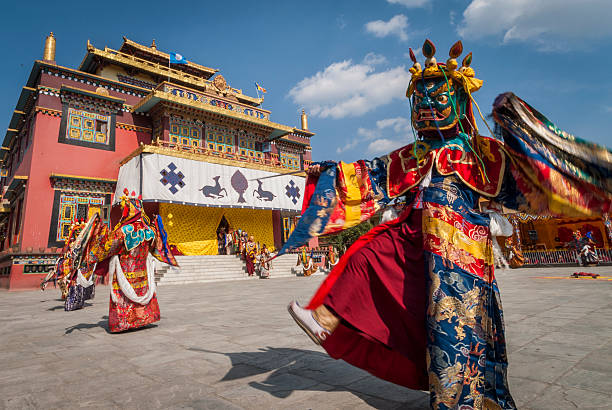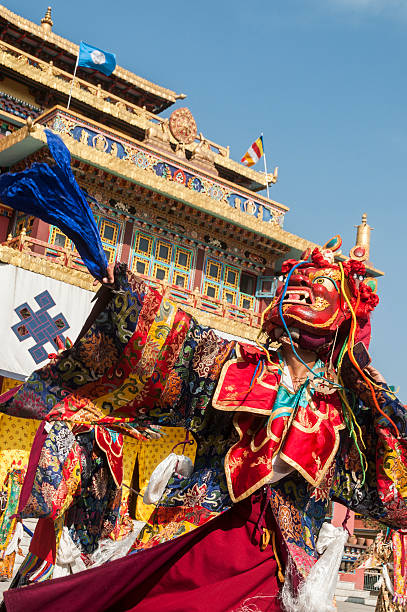Celebrating Losar: The Tibetan New Year | Global TV
As winter recedes and the first whispers of spring touch the Himalayan landscapes, the Tibetan community unites in joyous celebration of Losar; the Tibetan New Year. More than just a transition from one year to another, Losar is a deeply spiritual and cultural event, signifying renewal, gratitude, and hope for the future. It is a time when the Tibetan diaspora reconnects with its heritage, upholding traditions that have been passed down for centuries.
Origins and Significance

The origins of Losar can be traced back to Tibet’s pre-Buddhist era when the Bon religion flourished across the region. Farmers and herders observed a seasonal festival, offering incense and prayers to the local deities, seeking protection for their crops and cattle. When Buddhism spread across Tibet, these indigenous customs gradually intertwined with Buddhist philosophy, giving rise to the Losar we know today.
Marked by spiritual reflection and exuberant festivity, Losar is observed across Tibet, Nepal, Bhutan, Sikkim, and India, especially in regions like Dharamshala, Ladakh, and Bylakuppe. It is not just a festival but a reaffirmation of cultural identity, a testament to the resilience of Tibetan traditions despite political upheavals and global displacement.
The Days of Losar: A Ritualistic Journey
The celebrations of Losar extend beyond a single day, spanning weeks of preparation and three main days of festivity.
The Preparatory Weeks: Cleaning and Purification

In the weeks leading up to Losar, homes undergo thorough cleaning, symbolizing the removal of negativity and the welcoming of auspiciousness. Tibetans prepare traditional food, including khapsay (deep-fried pastries), and brew the famous butter tea. The air is filled with the scent of burning juniper and the rhythmic chants of monks conducting purification rituals.
Gutor: The Eve of Losar
The 29th day of the 12th Tibetan month, known as Gutor, is dedicated to driving away misfortunes. People prepare Guthuk, a special noodle soup containing symbolic ingredients like chili, wool, or coal, representing different fortunes or character traits. Mock exorcisms, fire rituals, and the burning of effigies mark this day, ensuring that evil forces do not follow into the new year.
Day One: Welcoming the New Year
On the first day of Losar, family members wake up before dawn, perform special prayers, and make offerings at their household shrines. The first drink of the morning is changkol, a warm barley beer, believed to bring warmth and prosperity. In traditional Tibetan homes, Chemar bo (a wooden box filled with roasted barley and butter sculptures) is placed at the center, symbolizing abundance and happiness.
Day Two: Public Celebrations
The second day, known as Gyalpo Losar, is dedicated to honoring Tibet’s secular and spiritual leaders. In exile, Tibetan communities gather in monasteries for special prayers, where monks perform cham dances (masked dances) to invoke divine blessings. Streets come alive with music, theatrical performances, and the echo of laughter.
Day Three: The Renewal of Bonds
On the third day, families and friends visit one another, exchanging greetings of Tashi Delek—a wish for good fortune. Colorful prayer flags are hoisted on rooftops and mountain peaks, fluttering in the wind, carrying prayers for peace and prosperity across the world.
A Message from His Holiness the XIV Dalai Lama
Losar is also a moment of reflection for Tibetans worldwide, especially for those living in exile. In 2010, His Holiness the XIV Dalai Lama addressed members of the Friends of Tibet, emphasizing the importance of inner peace and collective resilience. His message was a beacon of hope, reinforcing the ideals of compassion, unity, and non-violence, which continue to define the Tibetan struggle and identity.
“May we welcome this new year with open hearts and renewed determination. Let us cultivate compassion not just within our own communities but extend it to all beings. May peace prevail in Tibet and across the world.”
His words continue to echo deeply with Tibetans and their supporters, reminding them of their spiritual roots and their unbreakable bond with their homeland.
Global Celebrations and Participation
Losar is no longer confined to Tibetan settlements. Across the world, Tibetan cultural centers, monasteries, and activists organize events to introduce the beauty of Losar to a wider audience. In places like New York, London, and Toronto, Losar festivals feature cultural exhibitions, film screenings, and traditional performances, welcoming people of all backgrounds to partake in the Tibetan spirit of unity and resilience.
Even in the digital space, social media campaigns and online gatherings have become a vital way for Tibetans in exile to share their celebrations and connect with their roots. The Losar spirit transcends borders, reminding the world of Tibet’s enduring cultural heritage.
Wishing You a Blessed Losar!
As the sacred flames are lit and the mountain winds carry prayers to the heavens, let us embrace the spirit of Losar with gratitude, kindness, and hope. May this new year bring peace, harmony, and happiness to all.
Tashi Delek! May the blessings of Losar shine upon you and your loved ones!





